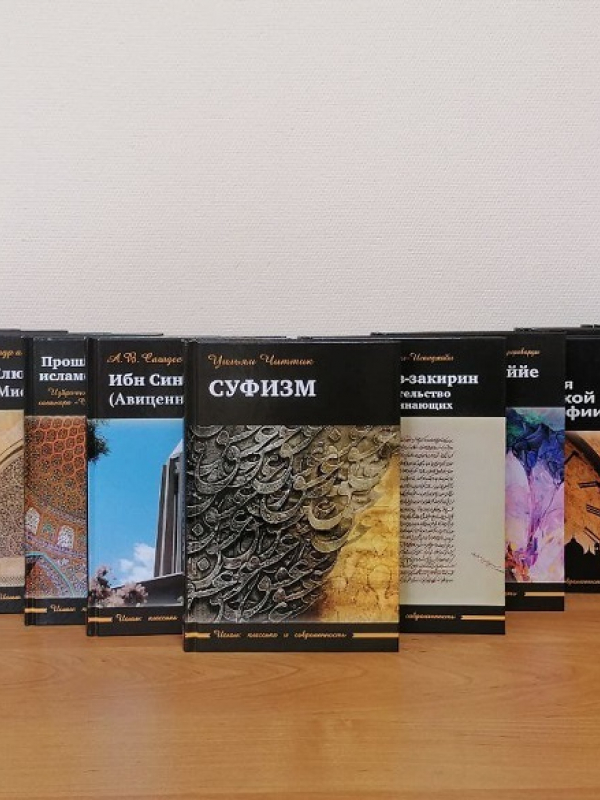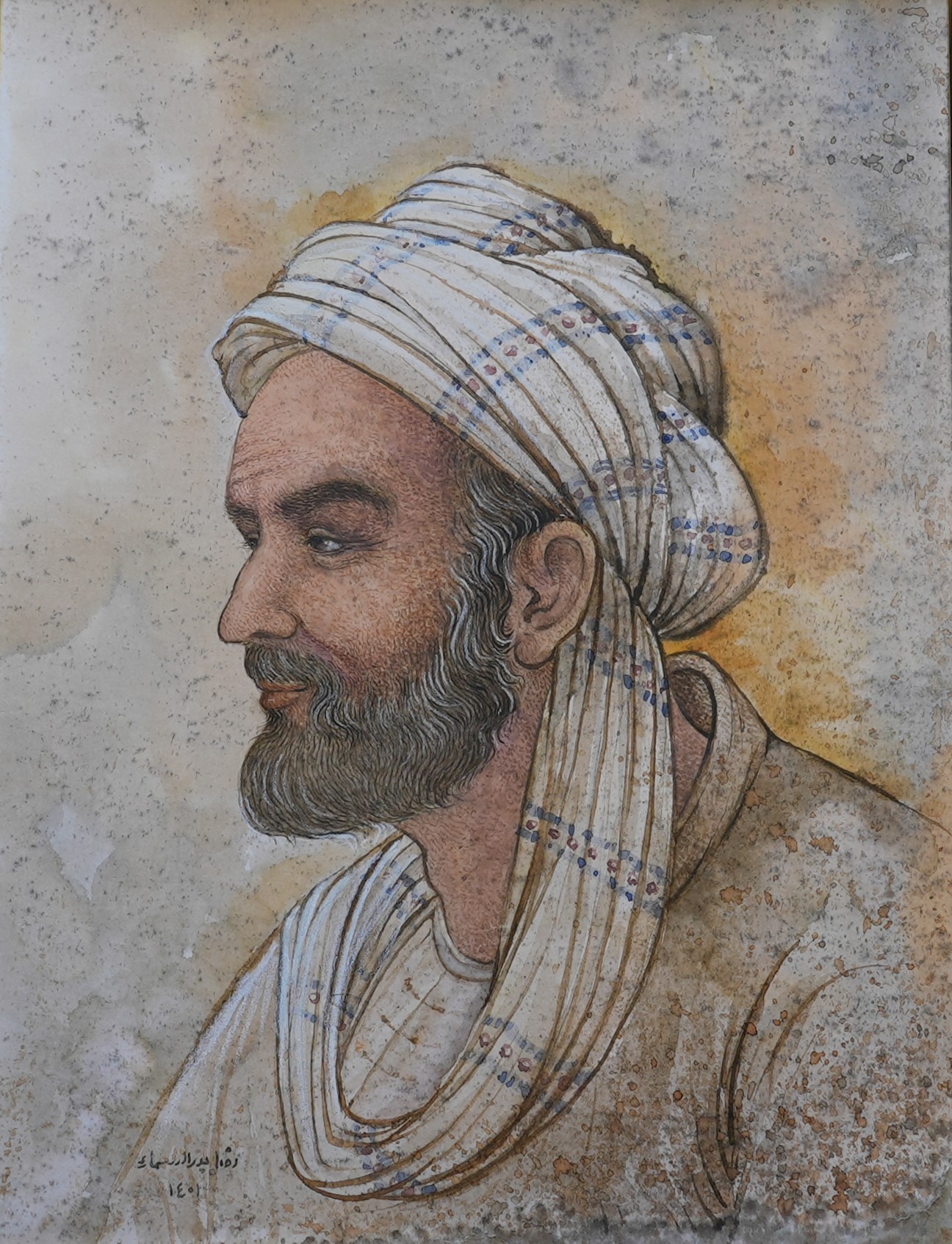The “Islam: Tradition and Modernity” series is published by the “Sadra” publishing house with the support of the Ibn Sina Islamic Culture Research Foundation since 2016. It is meant to introduce the reader to a wide range of issues that arose throughout the entire existence of Islamic thought.
14 books have been published in this series: “The history of Islamic philosophy”, “The story about Hayy ibn Yaqdhan”, “The correct balance (al-Qistas al-mustaqim)” by Abu Hamid Al-Ghazali, “Dialectics of the Abrahamic symbol”, “Morteza Motahhari – a thinker of action”, “The reconstruction of religious thought in Islam” by Muhammad Iqbal, “Sufism: development of the mystical language in an-Niffari’s works” (translation from Arabic, introduction and comments by R.V. Pskhu), “The Philosophy and Life of Mulla Sadra” by Seyed S. Safavi, “Burhan az-Zakirin” (“Evidence for those who remember”) of Dawlatshah al-Ispijabi, the collection of articles “The Past and Present of Islamic Philosophy. Selected articles of Sagadeev’s Readings’ participants (2008-2019)”, “The Man of Light in Iranian Sufism” by Henri Corbin, “The Key to the Hidden (Miftah al-ghayb)” by Sadr al-Din Al-Qunawi, “Ibn Sina (Avicenna)” by A.V. Sagadeyev, “Sufism” by W. Chittick.
“The history of Islamic philosophy” is a classical work of Henry Corbin about the history of the philosophical thought in the Islamic world, well-known to Russian and foreign readers. It was published with the participation of the most prominent representatives of the RAS Institute of Philosophy. The book’s academic editor is Yanis Eshots, one of the leading specialists in classical Islamic mysticism (Irfan).
“The story about Hayy ibn Yaqdhan” is a collection of annotated academic translations of three versions of a classical story about Hayy ibn Yaqdhan by Ibn Sina, Suhrawardi and ibn Tufail. The book was prepared with the assistance of the People’s Friendship University of Russia.
“The correct balance (al-Qistas al-mustaqim)” by Abu Hamid Al-Ghazali represents a commented translation from Arabic and research on one of the most interesting and complex works of this prominent medieval Muslim thinker conducted by professor V.V.Naumkin, academic advisor of the RAS Institute of Oriental studies. In this work Al-Ghazali attempts to Islamize the ancient logic. Drawing on the Aristotelian syllogistic, he disputes with Ismailian theologists.
“Dialectics of the Abrahamic symbol” by F. Nofal is the book that represents an attempt to understand the phenomenon of the Abrahamic myth. Drawing upon the original symbolic and existential concept, the author describes the architectonics of different religious systems – in particular, the Jewish, Christian and Muslim ones. In order to answer the question of how one mythology type differs from the other, the author has examined a rich body of materials collected over 10 years of hard work.
“Morteza Motahhari – a thinker of action” – is the most interesting excerpts of M. Motahhari works published in Russian. These works deal with the most important challenges of the Iranian society of the day, that is the correlation of religious and national identity of the Iranians, establishing the principles of the Islamic ideology, the legal status of women in Islam, the Islamic ideal of a perfect human and interaction between science and faith in the context of Islam.
“The reconstruction of religious thought in Islam” by Muhammad Iqbal is the major work of Muhammad Iqbal (1873–1938), which contains reflections on the Muslim legacy taking into account the political, social and economic challenges of the 20th century, modern scientific discoveries and philosophic knowledge. The translation and research of Iqbal’s work are supposed to defy the Islam-related stereotypes that tend to underestimate the Islamic culture’s potential for development, adaptation and improvement.
“Sufism: development of the mystical language in an-Niffari’s works. The Book of Standings. The Book of [spiritual] addresses. In relation to His wonderful speech about love” is the Russian translation of the Arabic works of Muhammad ibn Abd al-Jabbar al-Niffari, one of the most enigmatic personalities in the history of Sufism of the 10th century, has been published for the first time.
“The Philosophy and Life of Mulla Sadra” is dedicated to the great Safavi thinker Mulla Sadra (1571–1636). The author describes his main works and ideas and analyses the basic concepts of his religious and philosophical teaching.
The publication “Burhan az-Zakirin” (“Evidence for those who remember”) contains two works in Persian written by Dawlatshah b. Abd al-Wahhab al-Ispijabi (d. 1714), a Sufi Sheikh of the Yasawiya brotherhood, as well as a detailed historical and philological commentary.
“The Past and Present of Islamic Philosophy” is a collection of articles containing the materials of Sagadeev’s Readings held between 2008 and 2019 at the Peoples’ Friendship University of Russia (Moscow). The book includes articles on the history, philosophy, and culture of the Islamic world, as well as translations of several Arabic texts illustrating the intellectual life of the Muslim Middle Ages.
The book “The Man of Light in Iranian Sufism” by Henri Corbin examines Corbin’s legacy and his contribution to the development of Islamic studies, Iranian studies and related disciplines.
“The Key to the Hidden (Miftah al-ghayb)” is the most significant work of the outstanding Sufi thinker of the 13th century Sadr al-Din al-Qunawi. The work features a detailed analysis of the attributes and characteristics of the Perfect Human.
The book “Ibn Sina (Avicenna)” focuses on the life and work of Ibn Sina (980-1037), one of the greatest medieval thinkers. The author analyzes the thinker’s scientific, philosophical, social and ethical ideas and examines the influence of his encyclopedic works on various Eastern and Western schools of philosophy.
The book “Sufism” tells about Sufism — a mystical movement in Islam that dates back to the 8th century. Giving an overview of the Sufi tradition, the author attempts to demonstrate how main elements of the Sufi philosophy manifested themselves in different historical circumstances.



